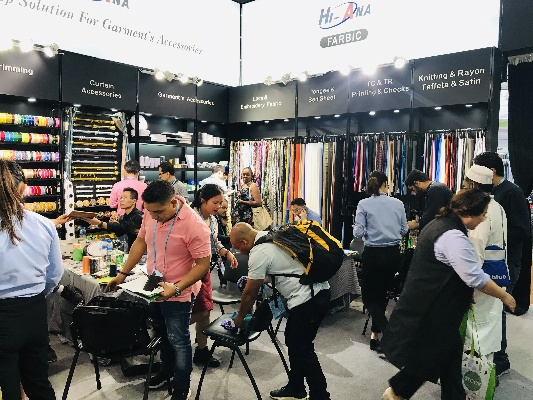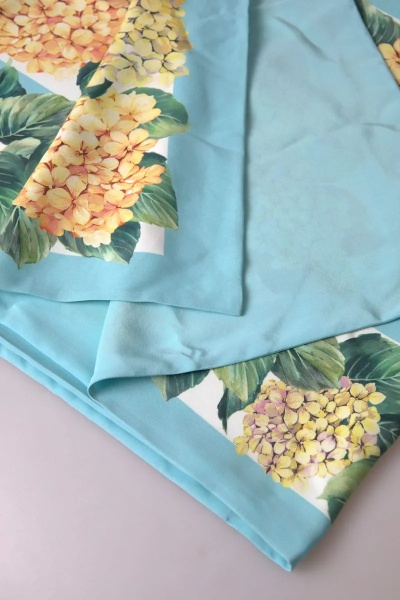The Forecasting of Textile Market Trends:An Overview
This paper provides an overview of the forecasting of textile market trends. The forecasting process involves analyzing historical data and identifying patterns that can be used to predict future demand. Factors such as economic growth, consumer behavior, and technological advancements all play a role in shaping the textile market. Additionally, the impact of global events such as pandemics and natural disasters can also have significant effects on the industry. By utilizing various forecasting models and statistical tools, businesses can make informed decisions about pricing strategies, inventory management, and product development. Overall, forecasting plays a critical role in ensuring that textile companies stay competitive in a rapidly changing market environment.
Textiles, as one of the most versatile and essential materials in the global economy, play a crucial role in both daily life and industrial production. With the rapid advancement of technology, the textile market is undergoing significant transformations, and accurate forecasting can help businesses to better understand market dynamics, make informed decisions, and optimize their supply chain strategies. In this article, we will discuss some key aspects of textile market trends, including current trends, future developments, and potential challenges. We will also provide an example of how to use a table to illustrate market data and analyze market growth.
Current Trends in Textile Market
Currently, there are several factors that are driving the growth of the textile market. Firstly, the increasing demand for sustainable and eco-friendly products has led to an increase in the popularity of organic cotton, bamboo, and linen among consumers. Secondly, the pandemic has accelerated the adoption of remote working and increased the demand for comfortable and durable workwear, which has boosted the sales of smart textiles like antibacterial fabrics. Thirdly, emerging markets like India and China are rapidly growing, offering new opportunities for textile businesses to tap into the vast consumer base and expand their operations.

Future Developments and Challenges
Looking ahead, several factors are expected to shape the textile market's future. On the positive side, technological innovations such as smart textiles, 3D printing, and bioengineering are expected to drive further growth and diversification in the industry. Moreover, the increasing focus on environmental sustainability will likely lead to more stringent regulations and standards, making it essential for businesses to adopt eco-friendly practices and invest in research and development.
On the negative side, rising raw material costs due to geopolitical tensions and climate change may pose challenges for textile manufacturers. Additionally, the ongoing trade disputes with China could impact the availability of high-quality textiles from certain suppliers. Furthermore, the COVID-19 pandemic has highlighted the importance of digital transformation and e-commerce platforms, requiring businesses to adapt quickly and stay ahead of the competition.
Case Study: The Rise of Bamboo Textiles in China
To illustrate how to use tables to analyze market data and analyze market growth, let's look at a case study of the success of bamboo textiles in China. According to a report by the Global Bamboo Association, China's bamboo industry is experiencing strong growth due to the government's support for sustainable agriculture and eco-friendly products. In 2020 alone, China's bamboo textiles market reached $1.8 billion, up 46% year-on-year.
To analyze this trend using a table, we could create a table showing the market size, growth rate, and major players in China's bamboo textiles market over the past five years. This table would include columns for market size (in million dollars), growth rate (as a percentage), and major players (companies that dominate the market). By analyzing this table, we can identify trends such as the fastest growth in the last quarter, top companies with market share above 50%, and the average growth rate over the past five years. This information can be used to inform strategic decisions and investment decisions for textile businesses looking to enter the bamboo textiles market in China.
In conclusion, predicting the future of the textile market requires a comprehensive analysis of current trends, future developments, and potential challenges. By using tables to present market data and analyze market growth, businesses can gain a clear understanding of market dynamics and make informed decisions to optimize their supply chain strategies. As we move into the future, it will be essential for textile businesses to remain flexible, innovative, and focused on sustainability to thrive in a rapidly changing market landscape.
随着全球经济的不断发展和消费者需求的日益多样化,纺织品市场呈现出前所未有的繁荣景象,本报告旨在深入分析纺织品市场的现状和发展趋势,为相关企业和投资者提供决策参考。
市场现状
市场规模与增长
全球纺织品市场规模不断扩大,特别是在亚洲、欧洲和美洲等地,纺织品消费持续增长,根据市场调研数据,未来几年纺织品市场将继续保持快速增长态势。
消费者需求特点
随着消费者对纺织品品质、环保、时尚等方面的要求不断提高,消费者需求呈现出多元化、个性化的发展趋势,随着科技的不断进步,新型纺织材料和工艺不断涌现,为纺织品市场带来了新的发展机遇。
市场预测
未来发展趋势
未来纺织品市场将呈现以下几个发展趋势:
(1)绿色环保趋势:随着环保意识的不断提高,绿色环保纺织品将成为市场的主流趋势。

(2)个性化定制趋势:随着消费者需求的多元化和个性化发展,个性化定制纺织品将成为市场的新热点。
(3)高科技应用趋势:随着科技的不断进步,新型纺织材料和工艺的不断涌现,纺织品市场将迎来更多的发展机遇。
预测模型分析
基于市场调研数据和行业分析,我们可以建立以下预测模型:
(1)市场规模预测模型:根据市场规模扩大趋势、消费者需求特点等因素,我们可以建立市场规模预测模型,预计未来几年纺织品市场规模将继续保持快速增长态势。
(2)竞争格局预测模型:根据行业分析,纺织品市场竞争将更加激烈,企业需要不断创新和提高自身竞争力,随着新型纺织材料的不断涌现,未来纺织品市场将迎来更多的发展机遇。
案例分析
以某知名纺织品品牌为例,其近年来在市场上的表现和成功因素:
某知名纺织品品牌近年来在市场上表现强劲,主要得益于以下几个方面:
(1)产品质量稳定可靠:该品牌一直注重产品质量和品质控制,采用先进的生产工艺和检测设备,确保产品质量稳定可靠。
(2)产品种类丰富多样:该品牌产品线涵盖了各种材质、颜色、图案等,能够满足不同消费者的需求,该品牌还注重产品的时尚感和个性化定制,推出了一系列符合消费者需求的特色产品。
(3)营销策略创新:该品牌注重营销策略的创新和升级,通过线上线下多渠道营销、社交媒体营销等方式提高品牌知名度和影响力,该品牌还注重与时尚品牌、设计师等合作,推出了一系列时尚新品。
结论与建议
纺织品市场前景广阔,未来几年将继续保持快速增长态势,企业需要不断创新和提高自身竞争力,抓住市场机遇,消费者也需要提高自身素质和意识,选择高质量、环保、时尚的纺织品产品,以下是针对企业和消费者的建议:
对于企业而言,需要抓住市场机遇,加强技术创新和研发能力,提高产品质量和竞争力,需要注重品牌建设和营销策略的创新和升级,提高品牌知名度和影响力,还需要注重环保和时尚等方面的要求,推出符合消费者需求的高质量、环保、时尚的纺织品产品。
对于消费者而言,需要提高自身素质和意识,选择高质量、环保、时尚的纺织品产品,也需要关注市场动态和趋势,了解市场需求和变化情况,选择适合自己的纺织品产品,还需要关注纺织品的环保和可持续性等方面的问题,选择符合环保和可持续性要求的纺织品产品。
Articles related to the knowledge points of this article:
The Constraints of Phosphorus in Textile Products:A Global Perspective
The Essential Guide to Choosing the Right Textile Processing Services



